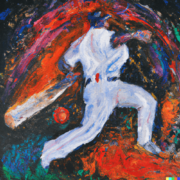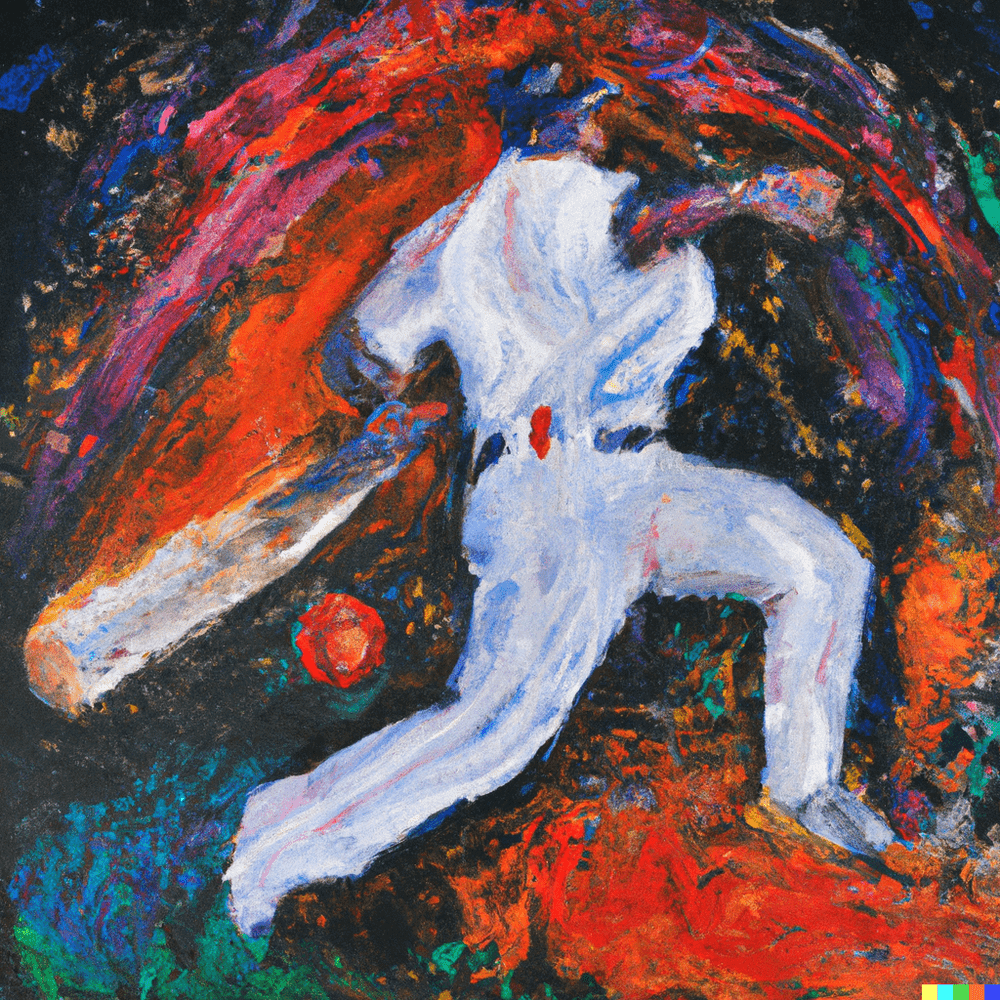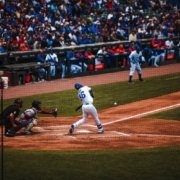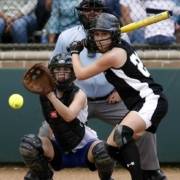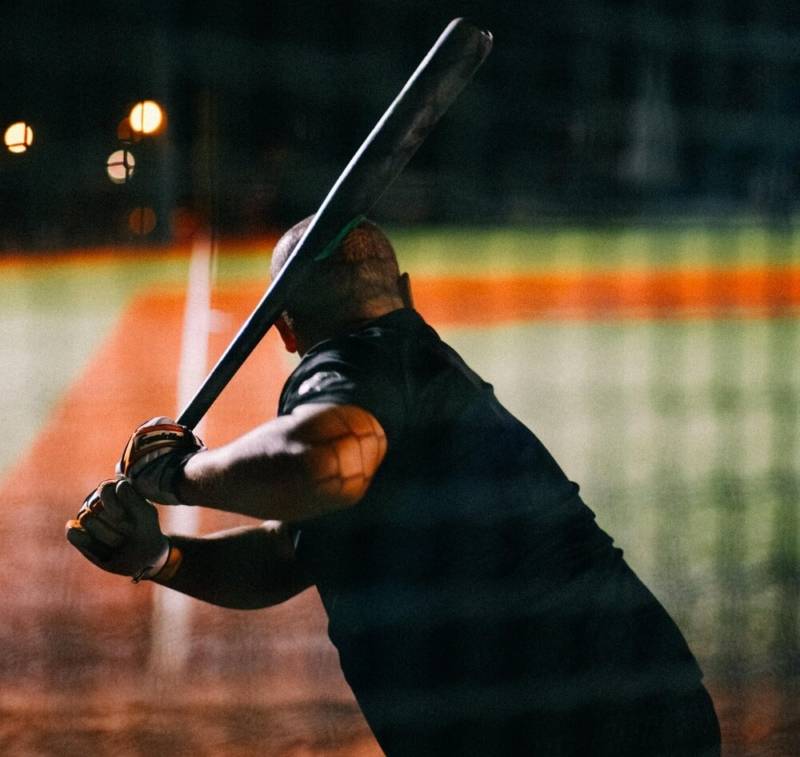
Is it impossible to hit a baseball or softball? Discover how youth swing science drills are the key to hitting power, line drives, and batting timing.
Science vs. Superstition: Guiding Young Hitters with Wisdom and Legacy
Coach, this one’s for you. Picture the sun setting, the nostalgic hum of a baseball game on the radio, and the memories of legendary players flashing before you. You’re not just coaching a game, you’re passing on a legacy. Let’s make sure it’s the right one.
Baseball’s Deep Roots: Between Tradition and Technique
Ah, the charm of baseball’s history. Those stories, those legends. But, Coach, you’ve probably heard a few age-old hitting myths in your time, right? You may still subscribe to them now. I hear you, ideally in certain situations, the myths may hold true. Problem is, the myths themselves tend to be SUPER vague and if left up to interpretation, could lead a hitter down a really dark performance path.
SCIENCE-BASED TRAINING:
Improve your hitting strategy dramatically by applying human movement principles.
Learn not only how and what to train but also the science behind the methods.
Why Old Tales Persist
Every coach, every player has their secret sauce. But remember, even Babe Ruth would’ve benefited from a bit of science. And the same could be said for Ted Williams, Nolan Ryan, Hank Aaron and others from the past who were the forward thinkers of their time. In today’s game, you have guys like Joey Votto and Josh Donaldson.
Merging Wisdom with Science
You’re not just a coach. You’re a mentor, a guide. So, it’s crucial to understand the why behind the how.
Cracking the Code: Biomechanics and Those Legendary Hits
Myth 1: “Keep your eye on the ball”
Sure, concentration’s crucial. But with today’s fast pitches, it’s all about prediction. Mentor your players to trust their intuition, shaped by training.
- This study showed it’s virtually a human impossibility to see the ball hit the bat, as Ted Williams once said that he could do on the “rare” occasion. “Predication” is a broad term, I like to think “VERY educated” guess.
- Pitch recognition training plays a BIG role in this.
- And Perry Husband’s Effective Velocity and three dimensional hitting plays another role.
Myth 2: “Swing as hard as you can”
Imagine teaching discipline during tournaments. It’s not about brute force; it’s about control, just like your leadership style. I tell my hitters that “alignment” and “structure” MUST take place before “bat speed”.
- Alignment: is the ability of the hitter to hit the sweet spot more often. MLB calls this sweet spot% or “barrels”. Things to fix in the swing that are in this category include: pulling the head, stepping in the bucket, dropping hands, and over-rotating (more on this in future posts).
- Structure: is the ability of the hitter to put their body in the best possible position to exert force. Things to fix in the swing that are in this category include: Neck Brace drill, and Hollow Hold.
Myth 3: “Choke up on the bat for more control”
Balance, Coach, balance! You juggle family and coaching every day. Similarly, a hitter must find that sweet balance between power and control.
- I’m not a big fan of choking up because if a bat feels heavy, then the hitter MUST do overload and underload bat training. We also carry overload bats in our store if interested.
- I’m also not a big fan of choking up because it shortens a hitter’s lever, which lowers ball exit speeds. I am a big fan of lengthening out the front arm.
- And if increasing power you think choking up does (I assume because the hitter can swing faster???), then its using the spine as a weapon is the REAL answer.
Physics: That Unseen Coach on the Field
The Sweet Spot’s Legacy
From Mickey Mantle to Mike Trout, every legend has that favorite spot on the bat. Help your team find theirs. This is one of the best ways to find the sweet spot more often, by making swing adjustments. And the other piece to this is using the correct barrel path based on pitch location. This article goes into that.
Launch Angles: The New MVP
Modern baseball’s shifting, Coach. And just like you adapt to each player’s needs, adapting to the importance of launch angles can change the game. The “making swing adjustments” link above is the answer to this.
Evolving Tools: When Legacy Meets Modern Engineering
The Bat’s Journey
From the dense woods of yesteryears to today’s sleek alloys and BBCORs – bats have stories, just like your players. Share them. The bats may be getting heavier, but it doesn’t mean your hitter needs to follow behind because he or she can’t handle it. The overload and underload training link above is your answer. And also, don’t forget wood bats are the best sweet spot trainers because in comparison to sweet spot size, the alloys’ are much bigger. “It’s not the arrow, it’s the Indian”.
Glove Tales: More Than Just Leather
Remember the first glove you ever owned? Teach your players the importance of equipment choice. It’s more than just gear; it’s about history.
Sabermetrics: Because Every Legend Started with a Number
The Metrics That Matter
Beyond batting averages, there’s a world of numbers that can guide your team. Dive deep, Coach. First start with 101 reasons to teach your hitters based off of ball exit speeds.
Analytics: The Unsung Hero
Sure, it may feel distant from the dusty fields, but sabermetrics is the bridge between history and today’s game. Embrace it.
Leaving a Legacy: Tips for the Modern Mentor
Instill discipline, respect, and a thirst for knowledge. It’s not just about winning the tournament but about crafting legends.
Conclusion
Coach, balancing commitments, finances, and mentoring young minds isn’t easy. But, with a blend of old-school wisdom and modern science, you’re not just leading a team; you’re building the next generation of baseball greats.
FAQs
- How can I use sabermetrics to guide my team better? Sabermetrics provides insights into player performance and potential, offering a strategic edge in mentoring and game decisions.
- Why should I trust new techniques over tried-and-true methods? Merging tradition with modern methods ensures you’re offering your players the best of both worlds, honoring the past while preparing for the future.
- What’s the best way to instill discipline in my team? Consistency in expectations, valuing respect, and leveraging the lessons from baseball history can shape discipline and team spirit.
- How do I manage travel team finances? Explore sponsorships, fundraisers, and effective budgeting to ensure the team’s needs are met without compromising on essentials.
- How can I ensure my players respect the legacy of baseball? Incorporate stories from baseball legends into your coaching, emphasizing values, struggles, and triumphs that shaped the game.
SCIENCE-BASED TRAINING:
Improve your hitting strategy dramatically by applying human movement principles.
Learn not only how and what to train but also the science behind the methods.




